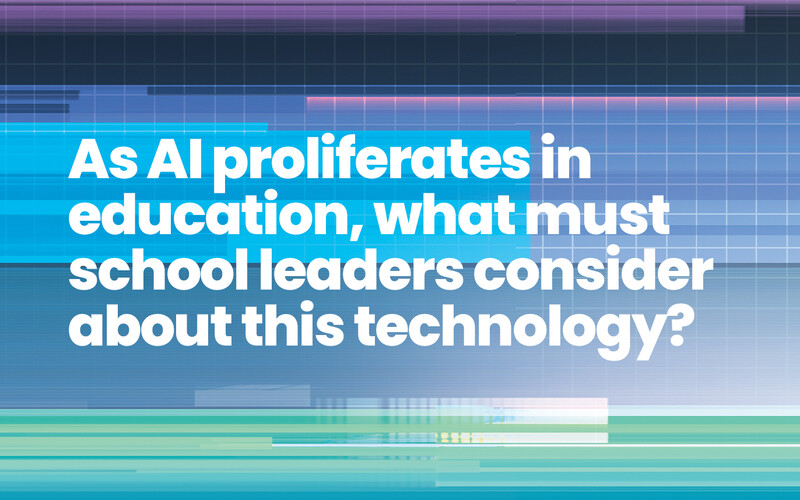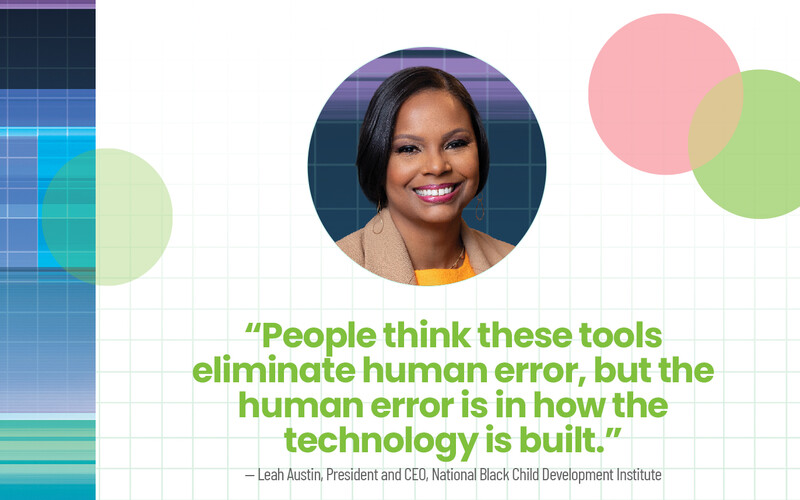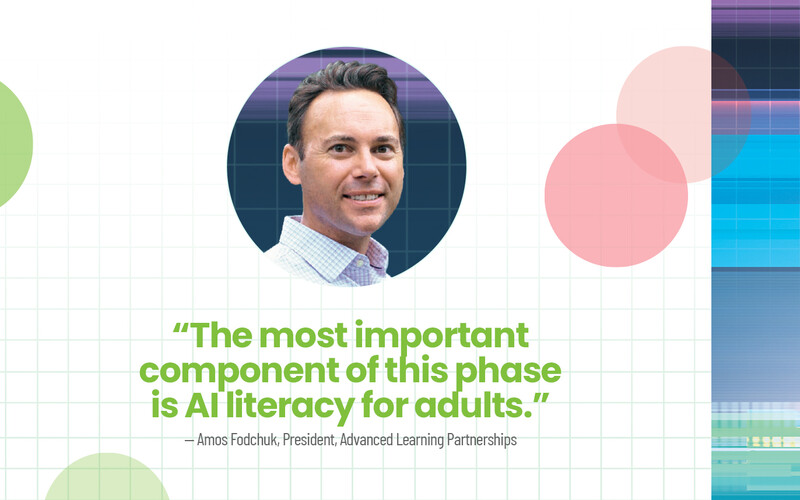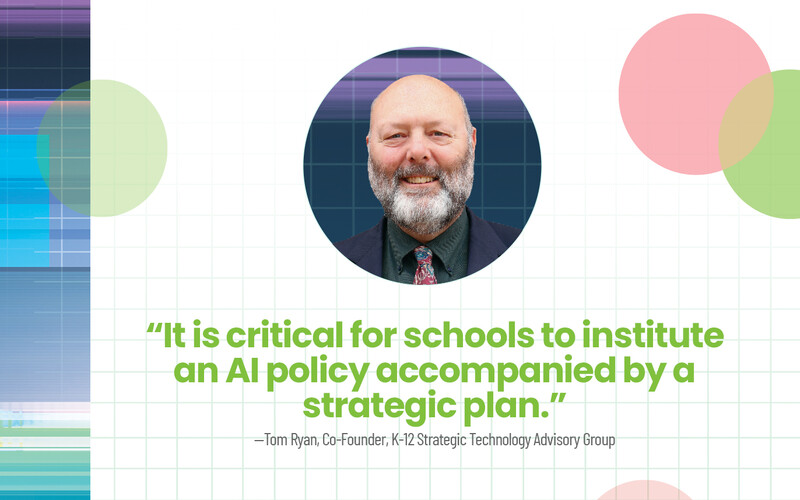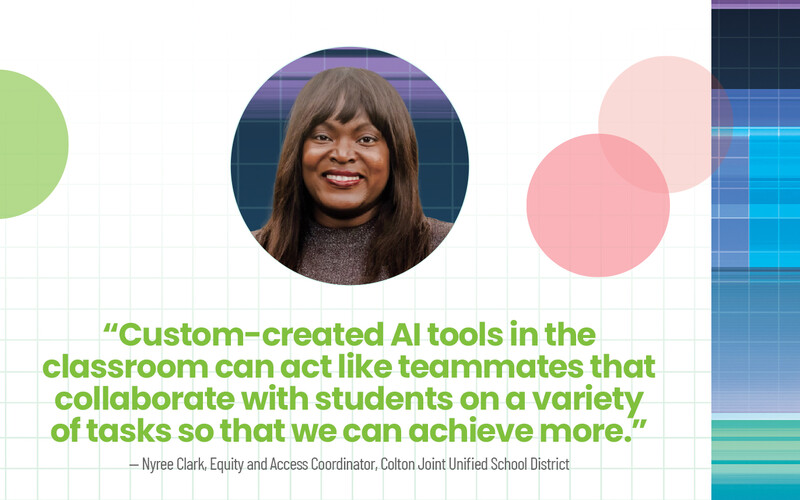EDTECH: How are you seeing K–12 districts responding to AI?
LEAH AUSTIN: There’s some fear, and there’s also excitement. Educators are hoping these tools will help unload some of their administrative burden so they can focus more on teaching and learning, which is what they signed up for. However, the technology is emerging so quickly that people are experiencing whiplash as they try to decipher what is “good” AI and what is “harmful” AI.
AMOS FODCHUK: Artificial intelligence has come on the horizon very quickly, and there are so many solutions now flooding the K-12 market. Many people started from a place of fear, but over time, we’re seeing an evolution toward a more nuanced understanding.
EDTECH: What are some key problems that AI can help schools solve?
AUSTIN: There are opportunities for teachers to use these tools in lesson planning and unit planning. I also think there are opportunities for educators to use AI for their own research. AI can be like the research assistant you could never afford, if used properly.
TOM RYAN: Some districts think they’re going to use AI to reduce teaching costs. That’s the wrong way to go about this. We should be looking at how to increase efficiency with AI so we have more money to pay and train teachers.
NYREE CLARK: Custom-created AI tools in the classroom can act like teammates that collaborate with students in a variety of tasks so that we can achieve more. This isn’t just limited to the classroom. Imagine a chatbot that parents can tap into when they come home at 9 p.m. and have some questions about busing. We also have principals who want to use AI tools to help them write better school plans. With education being an industry where people feel overwhelmed, this extra support from digital employees can free people’s time to focus on what matters most.
DIVE DEEPER: Microsoft’s Copilot can transform workflows in K–12.
EDTECH: How can AI help schools with back-end operations, such as IT and finance?
FODCHUK: We’re seeing a lot of creative ideas around school scheduling, bus scheduling and clerical tasks. There’s a really powerful opportunity for HR teams to build AI into job descriptions. One way to magnify talent is to identify redundant and low-level tasks and enable employees to engage with the technology in a way that allows them to amplify their impact.
CLARK: We have used AI to code more than 700 student empathy surveys. In 2023, it took us hours to manually code those surveys to find common themes. This year, we did it in minutes, and then we were off and running.







